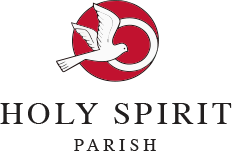
October, Month of the Rosary
by Reverend Matthew R. Mauriello
Tradition tells us that the Rosary, as a form of prayer, was given to St. Dominic by Mary, the Mother of God, who entrusted it to him as an aid in the conflicts with the Albigensians (a heretical dualist religious movement). The Dominican Pope, St. Pius V, did much to further the spread of the Rosary and it thereafter became one of the most popular devotions in Christendom. It was the same Pope St. Pius V, who in 1569 officially approved the Rosary in its present form with the Papal Bull, Consueverunt Romani Pontifices. It had been completed by the addition of the second half of the “Hail Mary” and the “Glory be to the Father” at the conclusion of each mystery.
Middle Ages where it came into being in various medieval monasteries as a substitute for the Divine Office for the lay monks and devout lay persons who did not know how to read. Instead of the 150 psalms, they would pray 150 “Our Fathers” counting them on a ring of beads known as the crown or “corona.” With the growth of popularity of Marian devotion in the twelfth century, the “Psalter of the Blessed Virgin Mary” developed now substituting 150 “Hail Marys” in place of the “Our Fathers.”
The 150 “Hail Marys” were subsequently subdivided into fifteen decades by the young Dominican friar, Henry Kalkar (1328-1408), with each decade referring to an event in the life of Jesus and Mary. The Dominican, Alanus de Rupe (1428-1478) further divided the episodes in the history of salvation into the joyful, sorrowful, luminous, and glorious mysteries. He also attributed the origin of the Rosary, then known as the “Psalter of the Blessed Virgin” to St. Dominic and thus spurred the Dominican Order to make the Apostolate of the Rosary their special concern. The Dominicans have, since then, promulgated the Rosary with notable results.
image by: Angelo Senchuke, LC
Article from: https://udayton.edu



 © 2021 Holy Spirit Parish
© 2021 Holy Spirit Parish